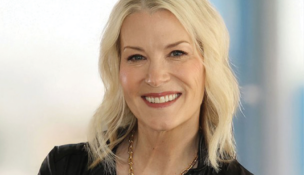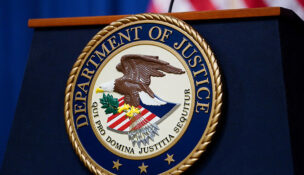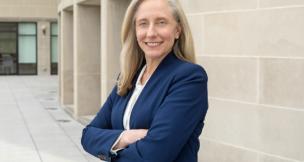Lending a hand
Small businesses, community banks mutually benefited from PPP loans
Lending a hand
Small businesses, community banks mutually benefited from PPP loans
There were days during the past six months that some employees at F&M Bank in Timberville worked through the night.
At 3 a.m., they were uploading loan applications for clients onto the U.S. Small Business Administration’s online portal. During the day, the site was overloaded with others applying for loans through the Paycheck Protection Program, the federal emergency funding to help businesses reeling from the economic implications of COVID-19.
Meanwhile, business bankers at Benchmark Community Bank in Kenbridge were on the phone working with clients on PPP loan applications some nights until 9 and 10 p.m.
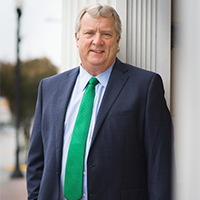
“It was a rush,” says Benchmark President and CEO Jay Stafford. “We were afraid the money was going to run out. We had to get this in quickly.”
Benchmark and F&M Bank are among the thousands of financial institutions in Virginia and across the country that experienced a surge in activity when the SBA rolled out its $349 billion Payroll Protection Program forgivable loans for small businesses in early April.
Capped at $10 million, the loans were designed to help small businesses with fewer than 500 employees cover payroll expenses, rent, utilities and other costs. The program was part of the federal Coronavirus Aid, Relief, and Economic Security (CARES) Act, a stimulus bill passed in response to the economic fallout from COVID-19.
The loans were a lifeline for some businesses that were forced to close temporarily, lay off employees or operate at a much lower capacity due to the pandemic. But businesses weren’t the only beneficiaries of the emergency relief program. Financial institutions nationwide, and community banks in particular, benefited from the increased lending activity, largely based on the close relationships that many already had forged with business owners in their communities.
‘It’s personal to us’
During the first round of the loan program, community banks across the country issued more than 66% of PPP loans and 63% of the program’s approved dollar amount, according to the SBA.
In Virginia, businesses received 114,570 PPP loans for a total of $12.6 billion issued through Aug. 8, when the program ended after two rounds.
Community banks in Virginia issued loans to more than their existing business customer base, however. Some gained new clients, who in some cases say they were referred by larger banks that were overwhelmed by requests for federal funding.
This came on top of already massive shifts in banking operations to prevent the spread of COVID-19. Many community banks closed their lobbies to the public except by appointment and conducted as many transactions as possible through branch drive-thrus and by phone.
For instance, F&M Bank closed about 700 PPP loans, a record number for the institution compared with the roughly 465 loans it would write during a typical April to August time frame, says Mark Hanna, the bank’s president and CEO. Loans ranged from $161 to $3.7 million, issued to a variety of small businesses, from law firms and medical practices to construction companies and toy stores, he says.
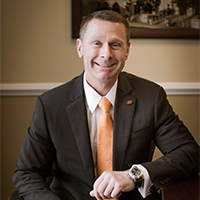
Some Virginia community bankers anticipate a bump in revenue for the year from that increased loan activity — although it depends on SBA forgiveness of PPP loans. Banks usually receive small payments on the fee for writing a loan, spread out over 18 to 24 months, but when the SBA forgives a loan, the bank receives the entire fee.
“Once it’s forgiven, our income will jump up,” says Bryan Thompson, president and CEO of Highlands Community Bank in Covington, which issued approximately 200 PPP loans, ranging from $500 to more than $1.5 million.
For smaller PPP loans, the process is straightforward and streamlined. In early October, the SBA posted a simple forgiveness form for businesses that received loans of $50,000 or less. The turnaround period between a business submitting the form and receiving SBA forgiveness approval is about two or three weeks, Stafford says.
Larger loans, however, are more complicated for both banks and clients. As of early October, the SBA hadn’t established a forgiveness process for PPP loans greater than $50,000.
The U.S. Treasury’s General Accounting Office projects that the forgiveness application and review process for those loans will take the average business owner as long as four hours and that banks would spend seven to 10 hours reviewing each application.
With more than 700 large PPP loans and 175 employees, “we just don’t have the resources” to spend that much time on each application, Hanna says. Yes, banks stand to profit if their clients’ loans are forgiven quickly, but paying extensive overtime wages to review applications would “not be a fair return,” he adds. “It’s still probably early to say with any authority that from a bottom line perspective it is good.”
Stafford, Hanna and other bankers are hopeful the government will extend the easier forgiveness process to loans below $150,000, which would cover many of their customers — but the move is unlikely to come before the Nov. 3 election. “It’s Washington, D.C.,” Stafford says. “They just cannot get together.”
When it rains
Stacy and Rachael Rose, owners of three Harrisonburg-region restaurants in McGaheysville and Dayton, received a PPP loan through F&M. Only one of their establishments, Hank’s Grille & Catering, remained open at the height of the pandemic, largely because menu items such as barbecue and brisket could be easily adapted for family-sized takeout meals. Also, they could run Hank’s with just four people.
After the pandemic began, their restaurant sales fell to 10% of normal levels, and all catering was canceled, says Stacy Rose. The Roses employed about 74 people across all restaurant locations before COVID-19.
Until the couple received a PPP loan in the program’s first round, it was impossible for them to pay employees — and keep their business afloat.
Without federal funds, “I think we would have gone backwards as a business,” says Stacy Rose, who opened Hank’s Grille and Catering in 1997. “We keep a rainy-day fund. That would have been depleted.”
Rose would not disclose the amount of the PPP loan his family business received. But once the Roses received the funding, they slowly began to hire employees back and provide group box lunches for companies, in addition to their takeout and outdoor dining business.
“It gave me more confidence,” he says.
Now, all of their restaurants are open, and business is gradually increasing, but it hasn’t returned to pre-pandemic levels, Rose adds.
“Several businesses would have closed without it,” Thompson of Highlands Community Bank says. “Others would have really struggled. We saw it as an opportunity to inject capital to save jobs in our community.”
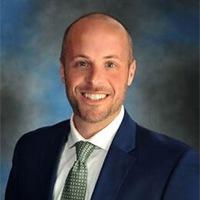
The bank’s 34 employees rallied to meet businesses’ PPP needs, stepping up to create documents, close loans and open deposit accounts in a “well-orchestrated” manner, Thompson says.
“It’s personal to us,” he says. “Almost all of us were born and raised here. Our kids are in school together. They are our neighbors and our friends. It was an opportunity to step up.”
Staying afloat
“The big question is, what happens tomorrow and the next day and after that?” says Lloyd Harrison, president and CEO of Virginia Partners Bank in Fredericksburg. “Businesses are hoping for this to end and some sort of normalcy to resume, but we don’t know when that is going to happen.”
Stafford (of Benchmark Community Bank) questions whether some hotels and retail businesses will be able to survive long-term.
At the beginning of the pandemic, Benchmark offered some of its customers a 90-day extension on loans. Community banks also doled out special services for customers during the tough economic time, such as suspending overdraft fees and offering deferrals on loan payments.
“Right now, the question will be, what’s going to happen in three to six months when the money is out?” says Stafford, whose bank issued 971 PPP loans for a total of $45 million.
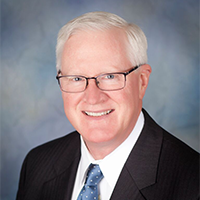
Still, not all businesses needed a PPP loan to lift declining sales activity. Business at T&E Meats, a slaughterhouse and meat processing plant in Harrisonburg, exploded at the beginning of the pandemic as a result of meat shortages across the country and the increasing number of people who were eating at home instead of restaurants.
T&E Meats co-owner Joe Cloud used a PPP loan issued through F&M Bank to keep his employees working for eight weeks at an additional $3 an hour for hazard pay. Due to safety concerns, two of the company’s 25 employees quarantined at home during April and May, and the loan allowed Cloud to continue paying them.
“I was looking at this onslaught of demand” for meat when grocery store stocks were low due to the pandemic, says Cloud, who also used the PPP loan to purchase new equipment. “It was good for my business, and it was what the public needed, too.”
Hanna says that several businesses that took out loans from F&M Bank repaid the funds because they didn’t experience as severe a financial downturn as expected.
But other customers as well as bankers are still waiting to get crucial answers about PPP loan funds, including whether another round of stimulus payments will come out of Congress. And while the federal government has stated that forgiven PPP loans will not be included in taxable business income, it’s not clear whether that same policy will apply to state corporate income tax in some states. Virginia has pending legislation introduced by Del. Joe McNamara, R-Roanoke County, to exclude forgiven PPP loans from state taxation. The issue will likely be decided during the 2021 General Assembly session.
“The whole thing’s been confusing pretty much from the get-go,” Thompson says.
Regardless of any rough edges, PPP loans were a necessary short-term fix, Harrison says. After all, with approximately 50 employees, Virginia Partners Bank is well-suited to understand the challenges facing the small business community. The bank issued more than 600 PPP loans, and the majority were for less than $150,000.
“I know what it is like to think about making a payroll,” says Harrison. “We understood this at an existential level. We knew that if someone wasn’t helping the small business community, there would be an awful lot of people who would fail.”
Virginia Business Deputy Editor Kate Andrews contributed to this story.
t




